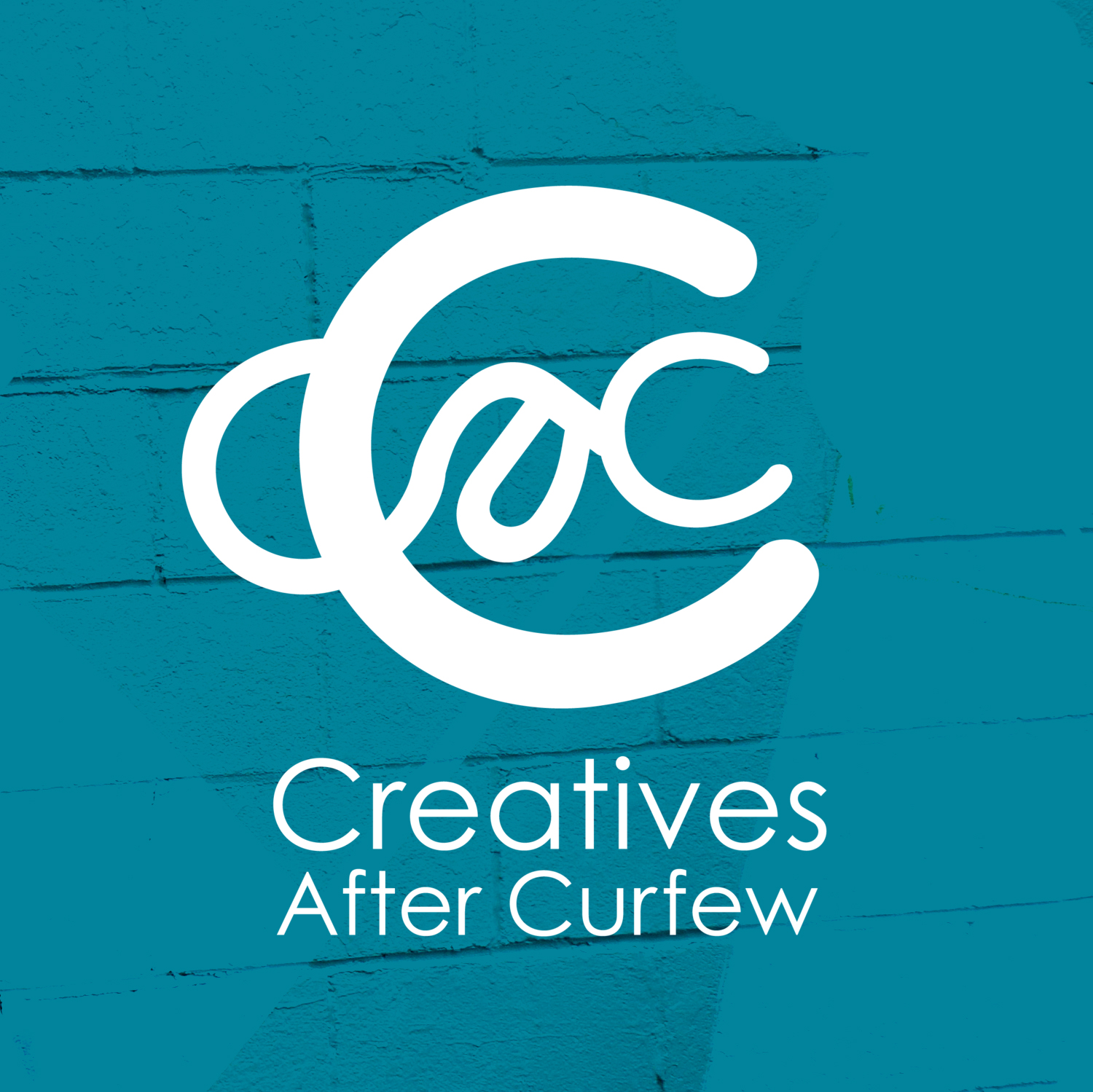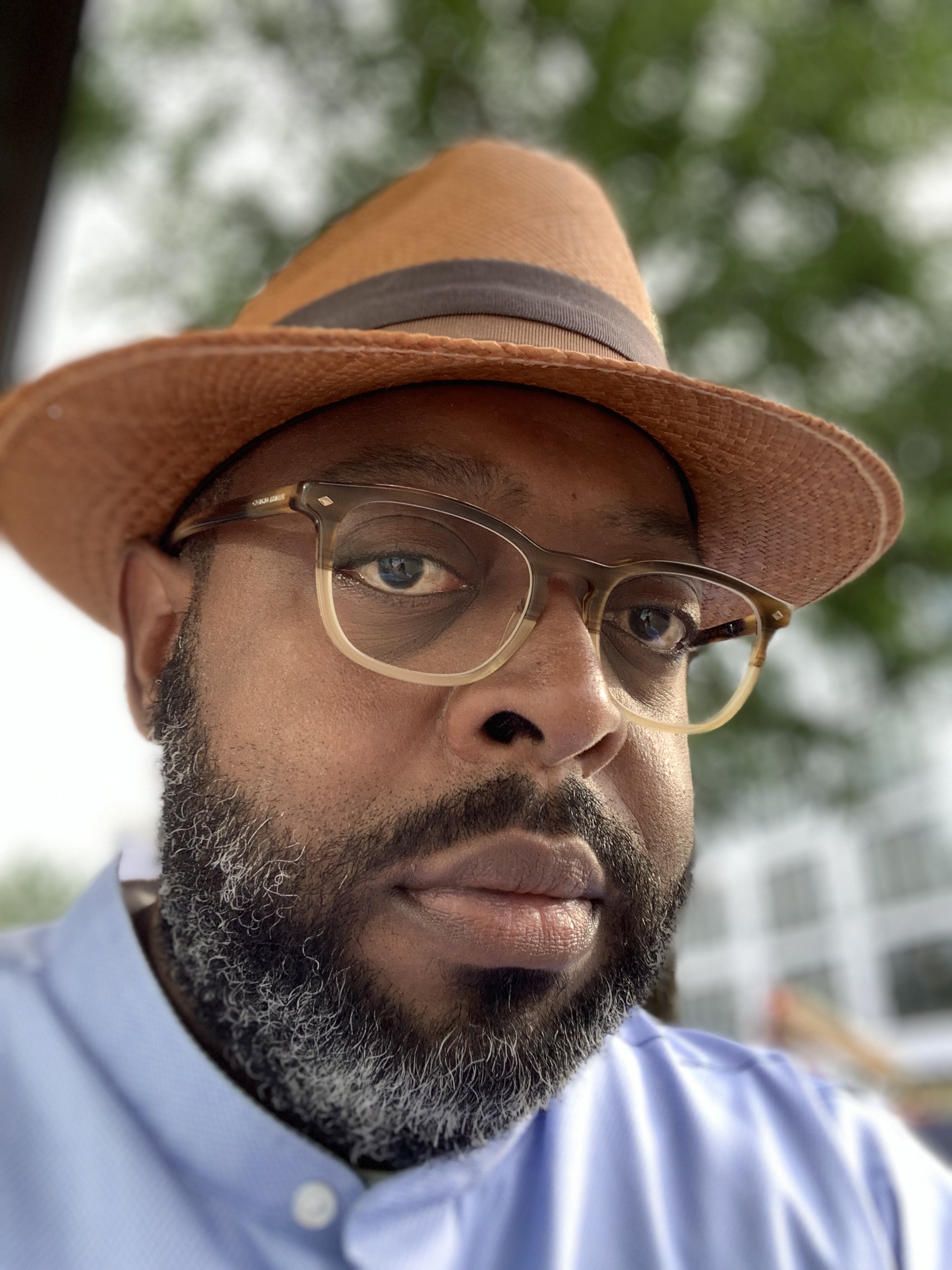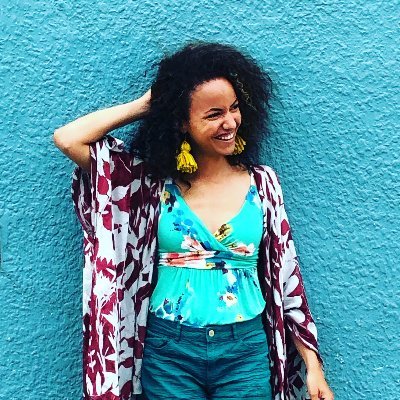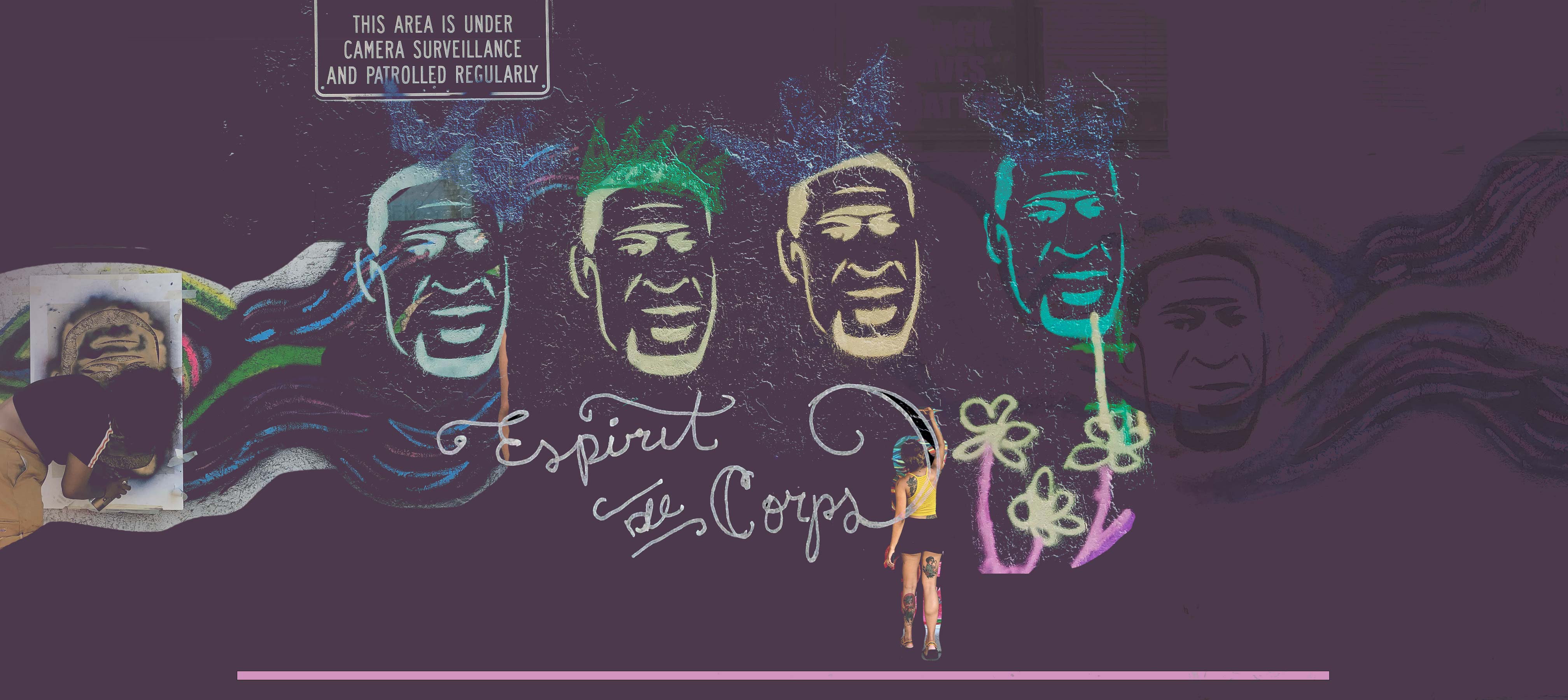
Esprit de Corps
/eˌsprē də ˈkôr/
Story by Michael Kleber-Diggs Art by Creatives After Curfew
Early on a weekday summer morning, before it gets too hot, four Black artists gather in South Minneapolis at the offices of the Minnesota Spokesman-Recorder. Two more artists are on the way. Along the south wall, against a new light-blue background, Bayou Bay is perched atop scaffolding; a wick of warm incense burns at his side. He’s filling in the details of a street sign that will read “E. 38th St.” Leslie Barlow is next to Bayou adding detail to the face of Tracey Williams-Dillard, the CEO and Publisher of the Spokesman-Recorder and the granddaughter of the paper’s founder, Cecil E. Neuman.
Cecil E. Neuman presides at the far left of the mural, the beginning of a continuum of sorts. This mural project is a restoration and reimagining of a previous iteration of the same concept, and it was undertaken by a two-year-old arts collective called Creatives After Curfew.
The artists work steadily, with skill and spirited togetherness. The original they’re updating had a multi-colored backdrop and featured many of the same local heroes. Where the original had a laptop, version 2.0 has a typewriter. So time works funny on the update. The original had weathered and faded over the years, as paint in the elements will do. The newly completed update has only been up for a few days, but some of the people featured on the wall have grown older. They’ve aged well though; they appear simultaneously fresher and wiser.
In addition to Neuman and Williams-Dillard, Gordon Parks, Mel Reeves, Kwame McDonald, Robert Dilliard, Gleason Glover, and others are featured. The mural and newspaper tradition it honors are about legacy, the archive, keeping a record, telling the story of those who’ve told us stories.
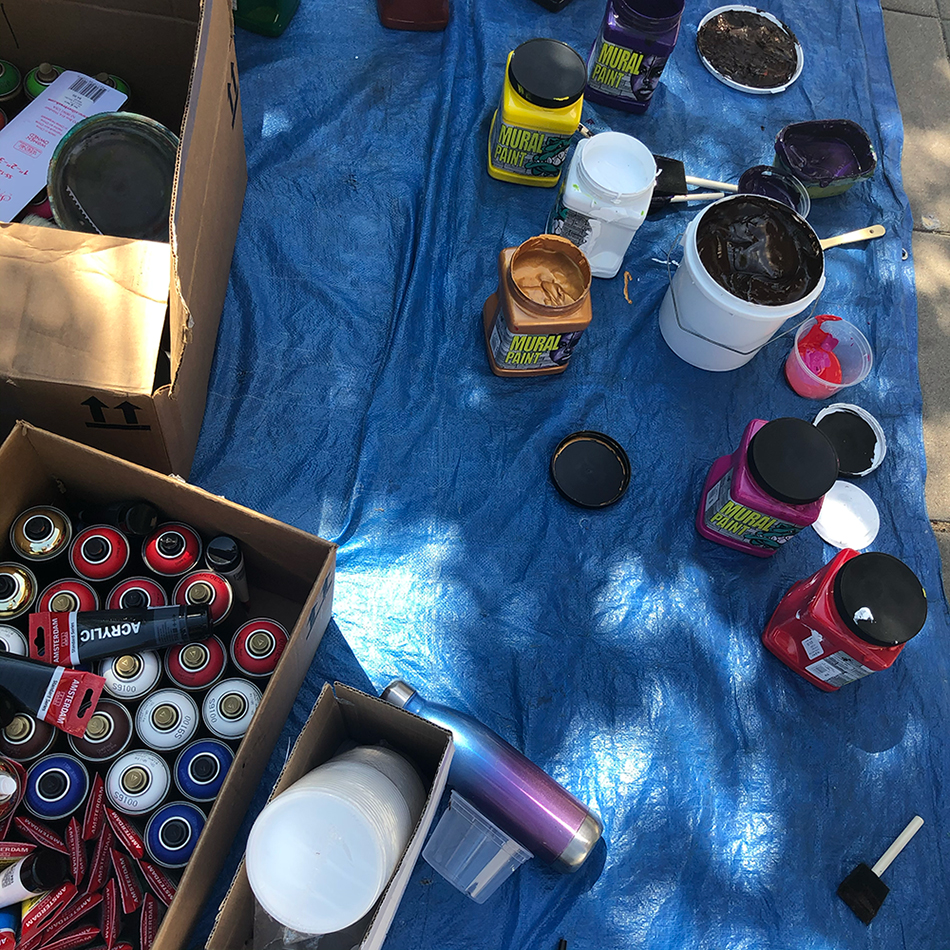
On the First Day of a Cities-Wide Curfew, 20 Artists Gather in a Park
On June 2nd, 2020, a few days after George Floyd was killed, the first night of curfews in Minneapolis and St. Paul, while helicopters hovered and sirens screamed both nearby and in the distance, a group of about 20 artists assembled in Phelps Field Park, one block south of the intersection where Mr. Floyd died. “Olivia [Levins Holden] sent a group text to a bunch of us asking if we wanted to connect and try to figure out some kind of collaboration,” says Leslie, a local artist and leader of the Public Functionary Studio Program. “We wanted to figure out how to contribute our skills to storytelling, art making, and community building.”
Juliette Myers, a visual artist and artist organizer, was there. “We all kind of came from different backgrounds — some of us had experience in public art, murals, or community art, some others came from studio practices,” she says. “We just came together to figure out how we could respond to the uprising and to what was going on in our city.”
Early on, the gathering had a sense of a larger purpose. “We were building something,” Bayou says. “And we love painting together. This has an opportunity to be something that continues to bring us together, so we can continue painting together.”
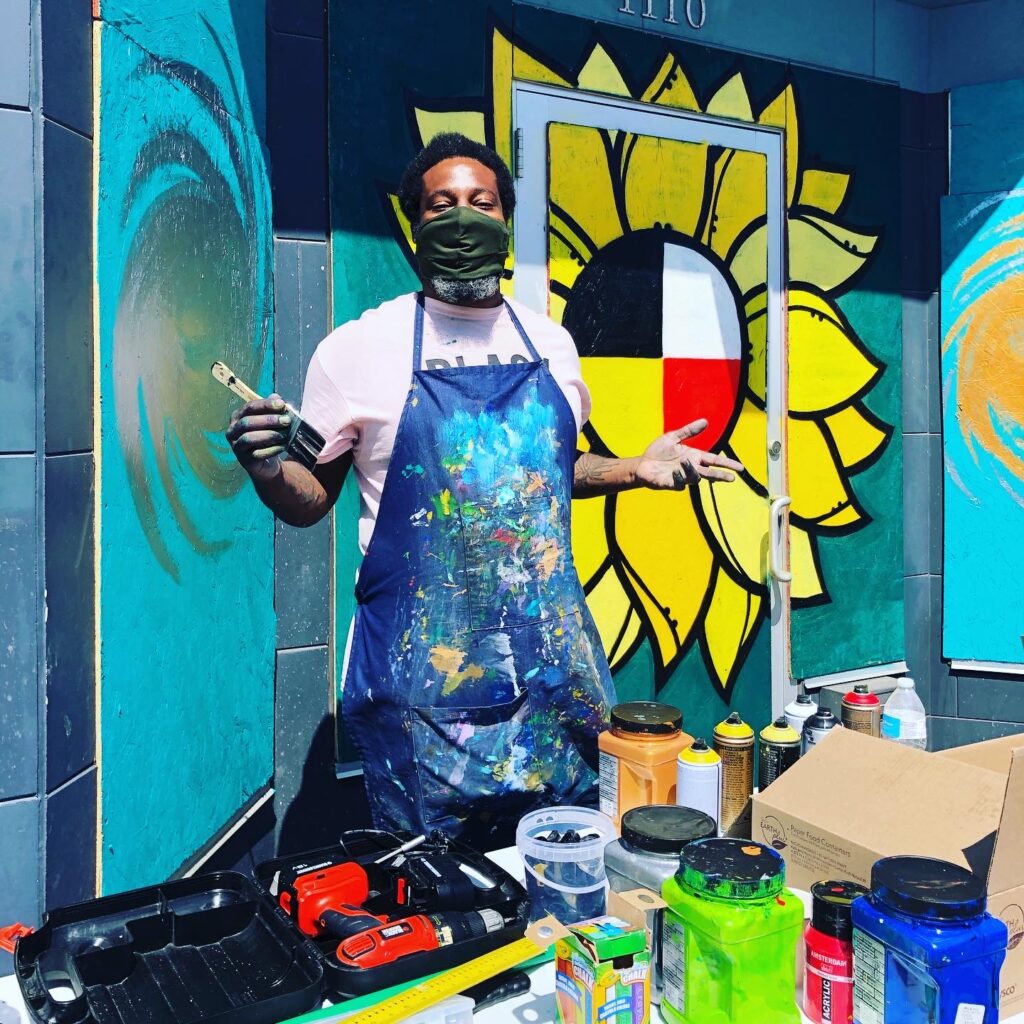
The pandemic was entering its fourth official month. Even outdoors, the artists maintained physical distance from each other, shouting across a circle so they could each be heard. “I was really excited to be a part of something that felt communal,” Leslie says.
The gathering divided into smaller groups focused on things like the kind of stories they wanted to share, funding, equipment, and immediate actions.
“I was a part of leading the immediate actions group,” says Leslie. “Because the Walgreens right down the street on Chicago had been looted already, and there were some boards up on that Walgreens, I was like, ‘Hey, let’s just start painting tonight.’”
Which they did. Nell Pierce, a visual artist and community artist was there that first night. “Sometimes community art is about long-term community engagement,” they say. “There shouldn’t be a separation between artists and community, right? We’re all braided together. But art can also be a platform for these rapid responses that bring community together in a spontaneous way.”
“Let’s just start painting tonight.”
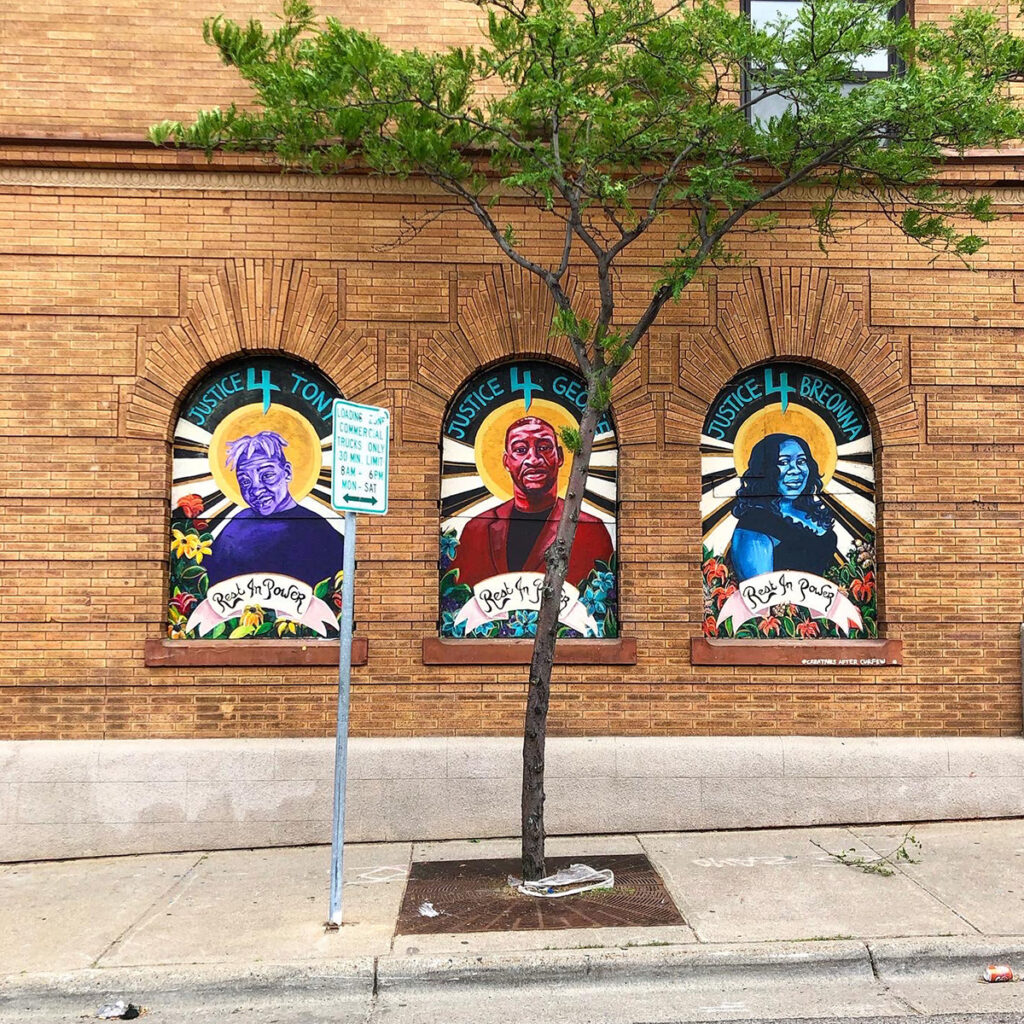
Black by Design
As the global pandemic and the death of Mr. Floyd made clear, grief can be both communal and personal. Communities all over the world suffer the loss of those dying during the lingering pandemic, and cities all over the world mourn with Mr. Floyd’s family. At the same time, proximity affects how we grieve. Entire countries can feel a loss, but the weight of tragedy tends to land heavier in the places where the tragedies occur. Beyond geography, communities of people experience losses differently. When police kill a Black person, it can feel personal to Black people, especially for Black people in the specific community where the violence took place. It feels personal because it is personal.
After Mr. Floyd was killed, the Cities’ Black community grieved and organized and expressed our righteous rage. Other communities — the larger Twin Cities community, cities all over the world, the community of compassionate people — grieved as well. Much of that communal grief was positive, but some of it risked being appropriative or opportunistic. Without care, the response could have excluded those who needed to be uplifted.
The group realized that demanding justice for Black lives requires centering Black artists in their movement for social change. “Creatives After Curfew was born out of an incredibly sensitive and traumatic moment for everyone but especially for Black people,” says Leslie. “Some of us quickly realized that Black voices were not leading or being centered in a lot of the artworks going up around our city on plywood boards and building walls — despite seeing the words Black Lives Matter everywhere.”
The work was more than a response to the appalling violence that cost Mr. Floyd his life. It was also more than a form of protest. “It was about people over property, making space for Black people to grieve, connect, and tell their own stories, and about speaking truth to power,” Leslie says. “The murals played an important role in how the city processed what was happening at that time, and what needed to change, and it is important that Black people were a part of that.”
“We knew we wanted Black artists and voices centered and supported in our work from the beginning.”
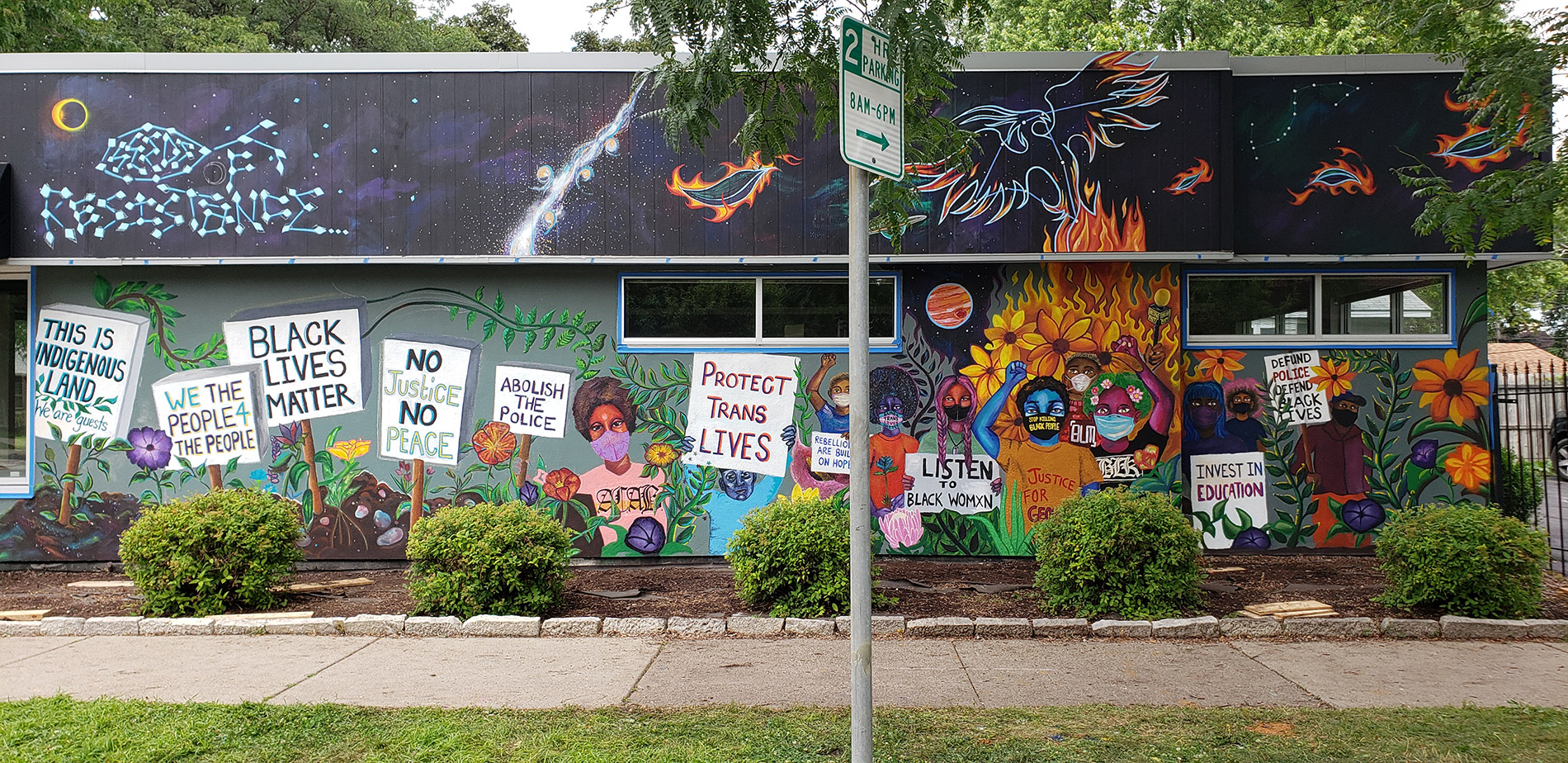
More Than Magnificent Murals
Since 2020, Creatives After Curfew has evolved while keeping the narrative art of mural practice at its core. The artists who were there on the first day continue as part of a collective. They still center and uplift Black artists and the Black community.
As the uprising and the pandemic raged on, as conversations about the future of Minneapolis and St. Paul began to take shape, Creatives After Curfew recognized an opportunity to add infrastructure and intention to their initial efforts, a chance to build something enduring — as a collective.
“Working collectively is counter to the systems that already exist,” says Tricia Heuring, also an early organizer of Creatives After Curfew, and an arts curator and Director at Public Functionary alongside Leslie Barlow. “In that moment, we were organizing in a way that felt really free and really close and on our own terms. We were making space for people that didn’t necessarily have access to murals in the past. We were having conversations around the disparities that exist in our art system. In the midst of a crisis, an alternative model was emerging.”
“In the midst of a crisis, an alternative model was emerging.”
That model has maintained its foundational priorities as the collective has grown — expanding into larger projects and more permanent murals. “Black artists continue to lead on messaging, conceptual designs, and painting,” says Leslie.
Everyone works toward common goals — art for the community, sharing knowledge, resources, and ideas. “If a project feels way bigger than I could ever handle on my own, I got a whole team,” says Bayou. “I got a whole group of folks that I love that rocks with me, that I can bring this to.”
In two years or so that Creatives After Curfew has existed as a collective, it has completed numerous mural projects and paid over $100,000 to artists who work on them. It has eased career pathways for young BIPOC artists. It promotes cooperative economics and works to ensure that mural projects are sized correctly and paid accordingly.
Silent Fox, one of the artists working on the Spokesman-Recorder mural, joined the collective in July of 2020. “For me, it’s about the connection with people,” they say. “It’s almost like a family. Creatives After Curfew made being an artist here feel really homey and welcoming.”
Nell echoes these themes. “In my experience, the art community here in Minneapolis is so much more collaborative than competitive,” they say. “Creatives After Curfew makes being a muralist more accessible to more people. There’s this sense of ‘your thriving is my thriving.’”
Creatives after Curfew is a decentralized collective of BIPOC/Queer artists & allies who mobilized during the Mpls uprisings in June 2020 to share resources, skills and knowledge as a contribution to the movement. creativesaftercurfew.com
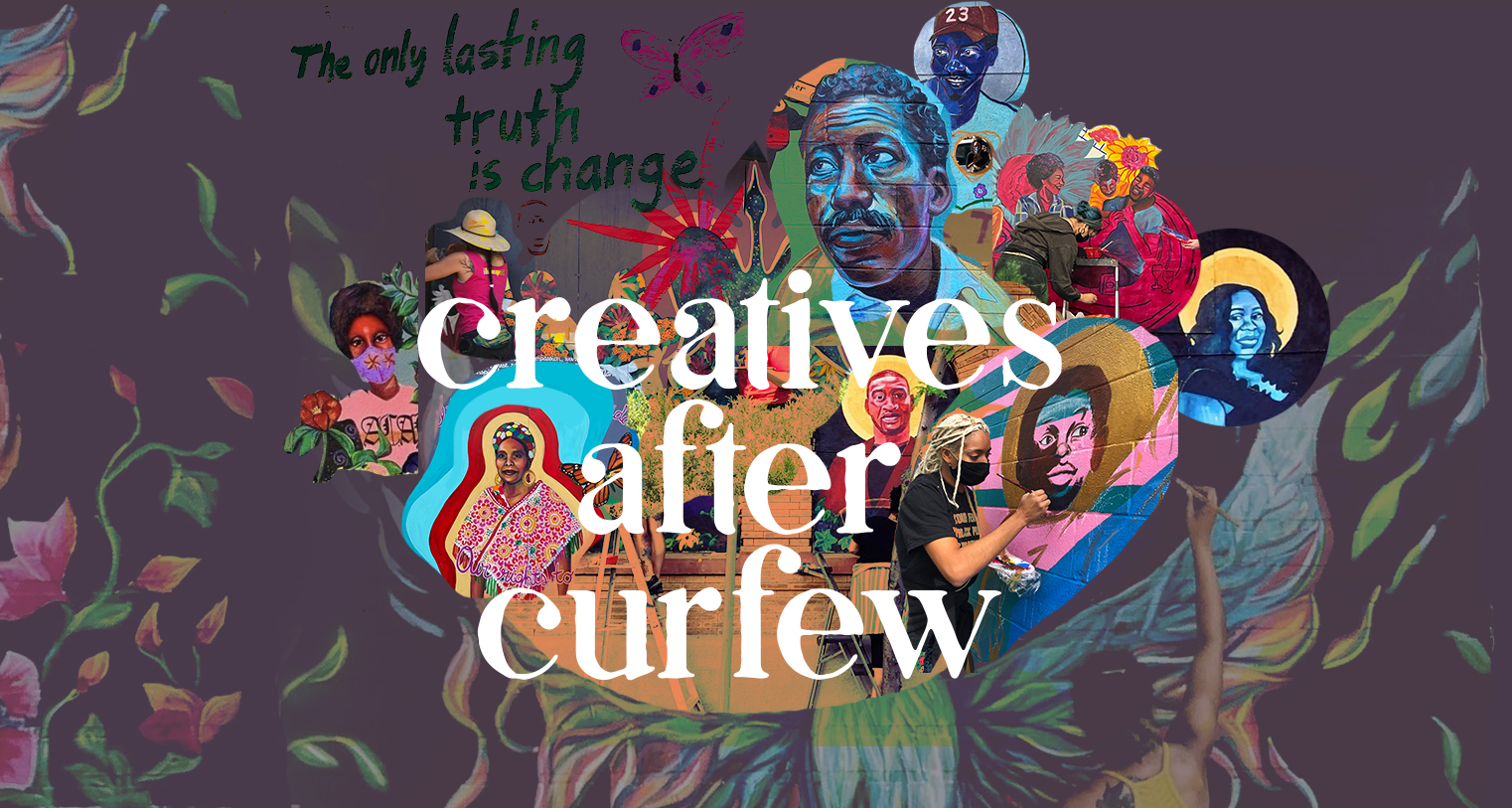

Contributors
